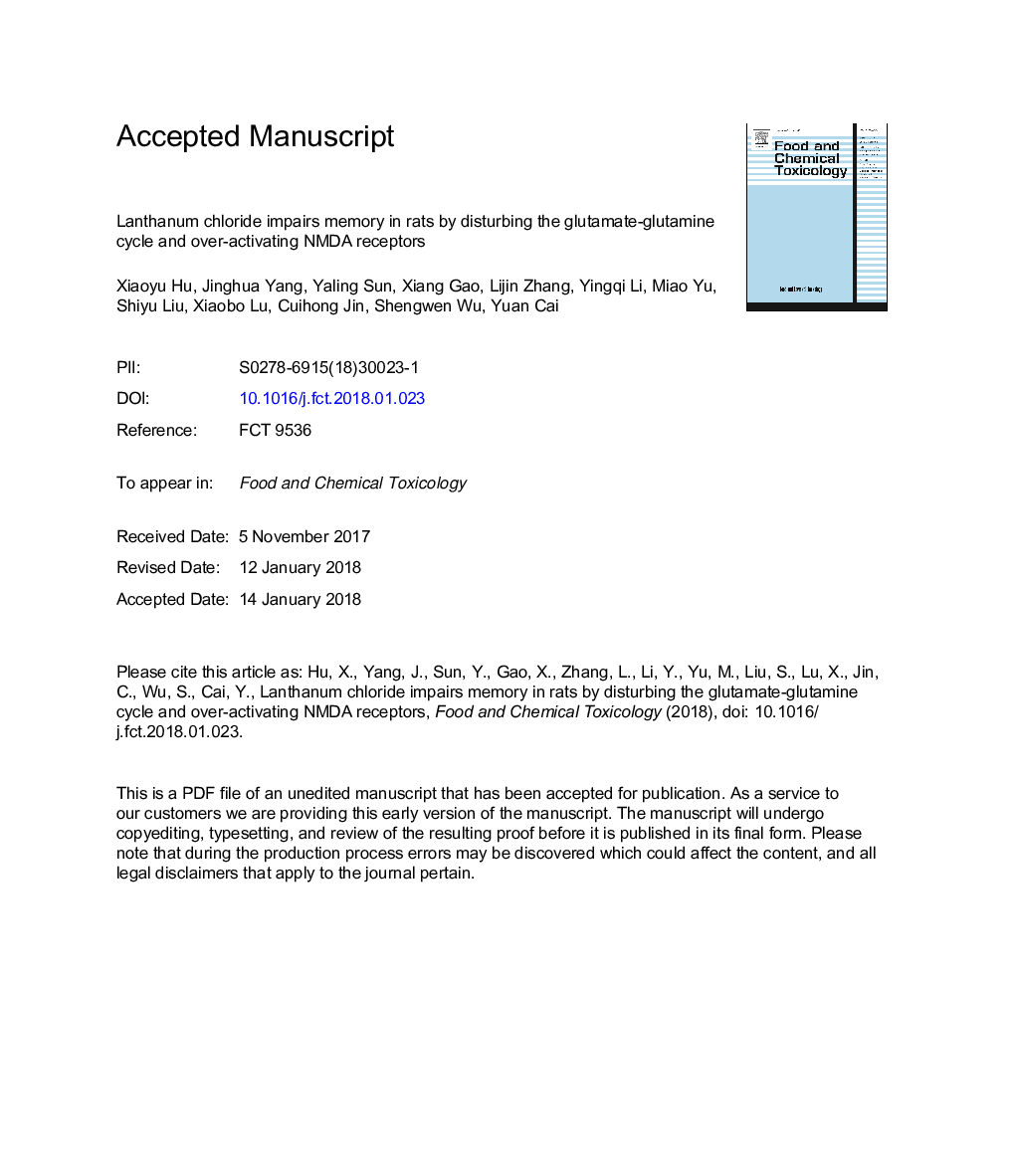| Article ID | Journal | Published Year | Pages | File Type |
|---|---|---|---|---|
| 8547929 | Food and Chemical Toxicology | 2018 | 50 Pages |
Abstract
Studies have reported that lanthanum chloride (LaCl3) can across the blood-brain barrier, accumulate in the brain and affect the spatial learning and memory abilities. However, the potential mechanism that LaCl3-induced neurotoxic effects has not yet been defined. Glutamate (Glu) is a vital excitatory neurotransmitter, and the excessive Glu accumulation in extracellular space can induce excitatory neurotoxicity. This study was designed to research the influence of LaCl3 on the spatial learning and memory abilities of rats and to discuss the possible mechanism underlying this effect regarding the extracellular Glu concentration, the Glu-glutamine (Gln) cycle and the N-methyl-D-aspartate (NMDA) receptors. Four groups of Wistar rats were exposed to 0%, 0.125%, 0.25% or 0.5% LaCl3 via the drinking water from the day of conception to 1 month after weaning. These results showed that LaCl3 exposure damaged spatial learning and memory, long-term potentiation, and neuronal ultrastructure, generated an excessive accumulation of glutamate, significantly decreased the expression of glutamate/aspartate transporter (GLAST), glutamate transporter-1 (GLT-1), glutamine synthetase (GS) and phosphate-activated glutaminase (PAG), and increased the expression of GluN1, GluN2A and GluN2B. This study showed that LaCl3 impaired the rats' spatial learning and memory abilities by disturbing the Glu-Gln cycle and over-activating NMDA receptors thereby inducing excitotoxicity.
Related Topics
Life Sciences
Agricultural and Biological Sciences
Food Science
Authors
Xiaoyu Hu, Jinghua Yang, Yaling Sun, Xiang Gao, Lijin Zhang, Yingqi Li, Miao Yu, Shiyu Liu, Xiaobo Lu, Cuihong Jin, Shengwen Wu, Yuan Cai,
